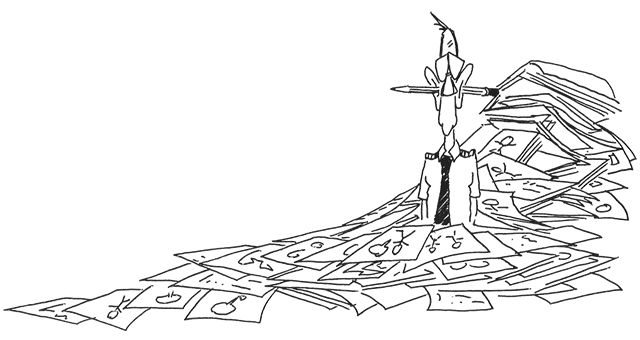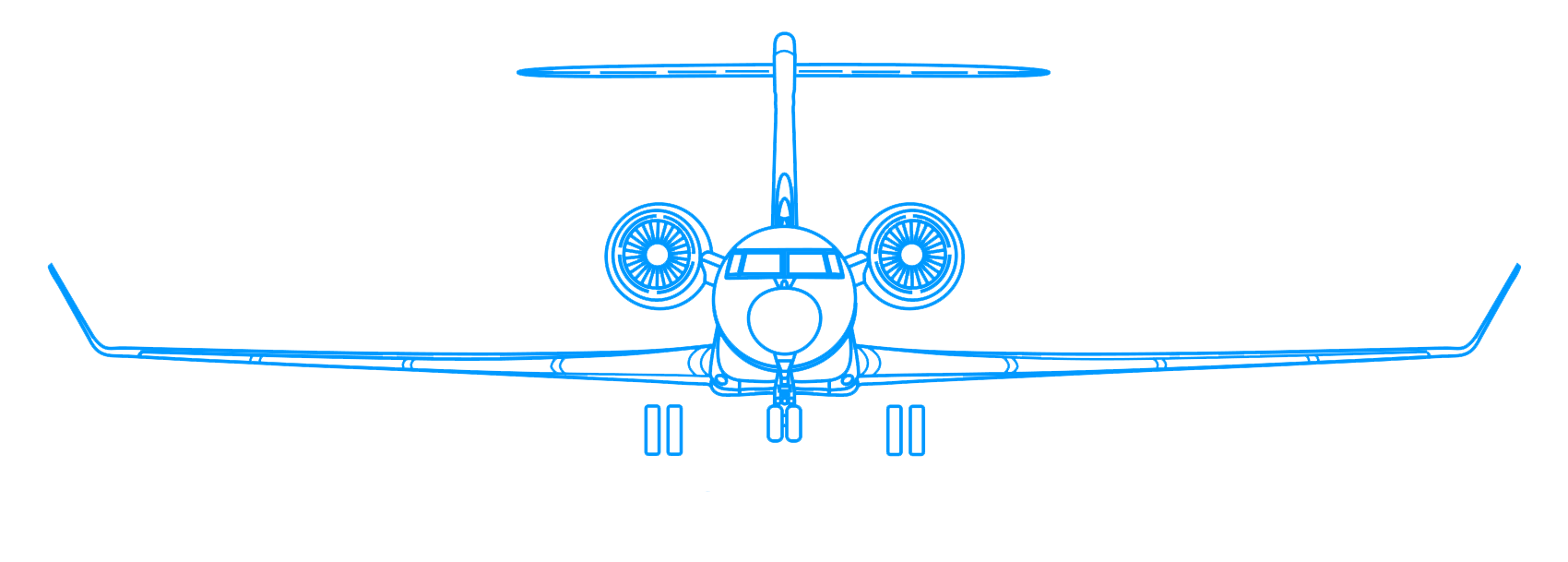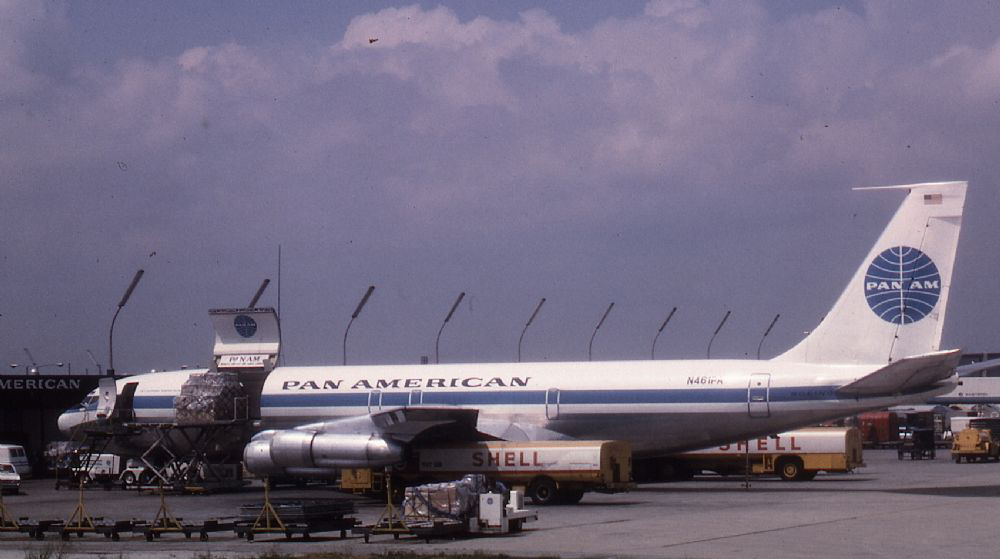Taken in isolation, this accident appears to be a simple case of a pilot flying an instrument approach incorrectly. But there is much more to it than that. This was another incident in a series of 13, 11 of which pointed to a problem with the Crew Resource Management culture at Pan American World Airways at the time. They were able to reverse this culture and became one of the safest airlines in the world.
— James Albright

Updated:
2019-01-01
Reading the accident report you would believed the captain somehow was thinking one step ahead of the airplane and descending one step early; the copilot was simply confused and didn't realize what was happening. But if you know a little more about the captain and the culture of the airline at the time, you realize there was a lot more to it than what was in the report. The captain had a record of having trouble planning his descents and not allowing dissent in his cockpit. This appeared to be a part of the culture of many Pan American World Airways captains at the time.

1
Accident report
- Date: 25 July 1971
- Time: 03:21
- Type: Boeing 707-321C
- Operator: Pan American World Airways
- Registration: N461PA
- Fatalities: 4 of 4 crew
- Aircraft fate: Damaged beyond repair
- Phase: Approach
- Airport (departure): Guam International Airport (PGUM), Guam
- Airport (arrival): Manila International Airport (RPLL), Philippines
2
Narrative
The weather wasn't too bad but it was late at night. Perhaps the biggest clue as to why the accident occurred can be found in the differences in age and experience between the two pilots.
- Flight 6005 was a scheduled international cargo flight from San Francisco to Saigon with intermediate stops at Honolulu, Guam and Manila. The flight from San Francisco to Honolulu and Guam was uneventful. At 2125 hours GMT on 24 July 1971, the flight took off from Guam for Manila. Initial contact with the flight was established by Manila Control at 2400 hours and the controller provided the flight with the latest weather information for Manila.
- At 0013 hours the flight reported having passed Jamalig one minute before, being at 67 DME and out of FL 200. It was then handed over by Manila Control to Manila approach control. The approach controller cleared the flight to BA and provided the crew with the following weather information: wind 280°/20 kts, visibility 7 kms, light rain, cloud 3/8 at 4,000 ft and 8/8 at 9,000 ft. At 0018 hours the flight was cleared for a VOR/DME approach to Runway 24 from the Bangbang Intersection and one minute later the flight reported commencing the approach. At 0021 hours the flight reported 22 DKE out of 5,000 ft for 4,000 ft and 20 seconds later reaching 4,200 ft. This was acknowledged by the controller who, thereafter was unable to establish contact with the flight. It was subsequently found that at approximately 0023 hours the aircraft collided with Mt. Kamunay some 20 miles ENE of the Manila VOR, at an altitude of 2 525 ft.
- Witnesses residing near the scene of the accident testified that they had heard the sound of an aircraft which ceased in an explosion, followed by two other explosions, one immediately thereafter and the second one a little later.
Source: ICAO Circular, §1.1, History of the flight
- The pilot-in-command, aged 61, held a valid Airline Transport Pilot's Licence No. 37004 issued by the U.S. FAA on 15 February 1960 with ratings on the Constellation, Lockheed, Douglas DC-4, DC-6/7, Boeing 707/720. The result of his last B707 proficiency check was satisfactory. He had flown a total of 17,011 hours in piston-engined aircraft and 8,248 hours in turbo-jet aircraft. He held a first class medical certificate dated 12 July 19 71 with the following restriction: "Holder shall possess correcting glasses for near vision while exercising the privileges of his airman certificate". He flew the subject route at least once a month.
- The co-pilot, aged 36, held a valid Airline Transport Pilot's Licence No. 1407404 issued by the U.S. FAA on 14 June 1967 with ratings on the Boeing 707/727. His last B707 Flight Simulator Proficiency Check was on 2 July 1971. He had flown a total of 1,300 hours with the U.S. Army Air Corps and 3,277 hours in the B707. He had flown 3 hours and 38 hours during the last 24 hours and 30 days, respectively. He held a first class medical certificate dated 16 February 1971 with no waiver/limitation.
Source: ICAO Circular, §1.5, Crew Information
- Manila: Wind 270°/16 kt; visibility, 9 km; 4/8 cumulus at 2,400 ft; overcast at 9,000 ft; temperature 25°c, dew point 21, QNH - 1005.5.
- Witnesses residing near the crash site reported that at the time of the accident it was raining heavily in the area. The crash site was completely obscured by clouds. The weather cleared in the afternoon.
Source: ICAO Circular, §1.7, Weather
3
Analysis
If you read the accident report's analysis with the perspective of crew resource management as we know it today, you will probably agree that the captain somehow lost situational awareness of the approach and the copilot was either confused or unable to express himself clearly enough. But if you knew the captain's history and the way the airline treated copilots who questioned their captains, you come away with a different conclusion. Thanks to an excellent book by Robert Gandt, we have just such an insight.
- There was no evidence to indicate that the aircraft was not in airworthy condition at the time of the accident. The crew of the flight who were in constant communication with the approach controller never reported any operating difficulty. The FDR and CVR readouts revealed no evidence of any aircraft abnormality during any part of the flight prior to the accident. The crew never recognized any impending disaster until initial impact at approximately 0023Z when a member of the crew shouted "look out".
- Altimetry was ruled out as a potential causal factor based on the cross checks of the altitude alerting system, whose aural signal was heard on the CAM channel at flight data recorder-correlated altitudes within the system tolerance of settings at 7,000 and 4,200 ft, as well as the correlation of the co-pilot's comments with the flight data recorder.
- A detailed examination of the flight profile followed by the aircraft versus the instrument approach procedure profile revealed that the pilot-in-command, who was executing the approach, failed to comply with the minimum altitude of 7,000 ft at the 23 mile DME fix. Based on a 29.92 in Hg setting on the altimeter recovered at the crash site, the altitude of the aircraft was already 6,095 ft when the co-pilot called out "twenty-three, now you're cleared down to four two". (CVR time 14.34.)
- Both pilots were perfectly in accord until CVR time 15.00 when the co-pilot stated "okay, at twenty miles out you are cleared down to three thousand". This statement was similar to the statement made by the co-pilot at 14.34 - "Twenty-three, now you're cleared down to four two" - except for the words, "okay" and "at". From the ensuing events, it was evident that the pilot-in-command missed the word "at" and interpreted the statement to mean that the aircraft was then at the 20-mile point and that descent was now authorized to 3,000 ft. This interpretation of events is confirmed by the pilot-in-command's statement at 15.18 - "Three thousand" and the co-pilot's reply - "three miles to go". This reply from the co-pilot must have been misconstrued by the pilot-in-command to mean that they still had three miles to go to 17 DME over which the minimum altitude was 3,000 ft. In fact, the co-pilot must have meant that they still had three miles to go before reaching 20 DME and starting the descent from 4,200 ft to 3,000 ft. This assumption is sustained by the IAP which provided a 3-mile segment between 23, 20 and 17 miles DME.
- At this juncture, the pilot-in-command was actually flying the IAP one segment ahead of where the aircraft was, and was also one segment ahead of the co-pilot. When the co-pilot replied to Manila Approach Control's request to report leaving 5,000 ft with a report of "we're . . . at, ah, four thousand", it is probable that his altimeter was reading 3,620 ft. Realizing that even the 4,000 ft value was below the minimum IAP altitude for 22 DME; he hastily changed this altitude report to 4,200 ft. and when he suspected that both he and the controller had been talking simultaneously, he repeated this report. At the time of the repeated report, the aircraft was at an indicated altitude of 3,420 ft.
- It appears that the pilot-in-command was not paying attention to this exchange of communications, or cross-checking the distance and altitude values against either his instruments or the IAP chart. After traveling for approximately three miles and believing that the aircraft had passed 17 OME; the pilot-in-command stated at 15.57: "Now, we go to twenty five uh?" This confirms that mentally he was one approach segment ahead of the aircraft. At this juncture the co-pilot's reply indicated that he had become confused and/or misread the IAP chart profile, for he agreed with the pilot-in-command that further descent was authorized by replying (15.57) "okay, now you are, now you are cleared down to twenty five hundred". At this point, the accident was inevitable as long as the aircraft remained in cloud.
- The CVR confirmed that the mountains were covered with cloud and that there was heavy rain in the area at the time.
Source: ICAO Circular, §2.1, Analysis
The following narrative is from the excellent book, Sky Gods, by Robert Gandt. It may be one of the best books on Crew Resource Management ever written.
Jim Wood was the first of his class to complete first officer training. For his initial line trip he was scheduled to fly with one of the ancients, a senior captain named Lou Cogliani. The trip was to Honolulu and back.
Wood showed up an hour and a half early. His shoes were spit-shined. The three gold stripes on each sleeve glowed like neon. He was prepared to learn about flying from the old master.
"Sir," he said, extending his hand, 'I'm Jim Wood, your first officer."
Captain Lou Cogliani, Master of Ocean Flying Boats, peered at the young man over the tops of his half-frames. It was the Look. He ignored Wood's hand. "How long you been flying, kid?"
"Ten years, including the Air Force and-"
"Never mind that shit. How long you been with Pan Am?"
"I'm new, sir. Just out of training."
Cogliani leaned over the operations counter. "Goddamnit, Evans," he barked at the clerk. "What's going on here? I told 'em I didn't want any new hires in my cockpit."
"I don't make the schedule, Lou. There's the phone. Call the chief pilot if you want."
Cogliani glowered at the phone. Then he shuffled through the paperwork for the flight to Honolulu. He ignored his new copilot.
They took off. Cogliani still had not spoken to Wood, except to order him to read the checklist.
Wood watched how the old master flew the 707. Captain Cogliani, he noticed, flew an airplane the way a bear handled a beach ball. He gripped the yoke with both hands. The veins stood out on his tensed forearms. He yanked, jerked, shoved, manhandled the protesting 707 all the way to 35,000 feet.
Wood glanced back at the flight engineer. The engineer nodded and rolled his eyes.
Wood was confused. Cogliani was a Skygod-a Master of Ocean Flying Boats. He was one of those legends that Wood most of all wanted to be like someday. He was supposed to be a hero. Something was wrong, thought Jim Wood. The Skygod was an asshole.
Approaching Honolulu, Cogliani commenced his descent from altitude too late, ignoring Wood's reminder about their rapidly diminishing distance from the airport. Too high for the approach, Cogliani had to fly a circle to lose altitude. Then he overshot the localizer, the final approach course. Honolulu Approach Control vectored them back onto an approach course straight into the runway.
At fifteen hundred feet above the field, the captain had still not called for the landing gear down. Wood kept his silence.
A thousand feet. Still no gear. Jim Wood bit his lip and said nothing.
At six hundred feet, Wood could stand no more. "Do you want the landing gear down, captain?"
Cogliani glowered at him. "Landing gear? Goddammit, I'll tell you when I want the gear down." Two and one-half seconds later, with a great deal of authority, he told him. "Gear down!"
No one, not even a new hire like Jim Wood, would dare suggest that the captain-a Master of Ocean Flying Boats-might actually have forgotten to lower his landing gear. Instead, Wood did something even more foolish. He laughed.
Three days later, in the chief pilot's office, Wood received his first lesson in Skygod protocol. The chief-the craggy-faced man who had welcomed Wood's class to Pan American-regarded the young man over the tops of his own half-frames.
"Do you want to keep your job, son?"
"Yes, sir."
"Then get this. You will sit there and raise and lower the captain's landing gear-on command-and keep your impertinent, newly hired mouth shut. Clear?"
"Yes, sir."
"Good. Get out of here."
Source: Gandt, pp. 85-87
The news filtered down to the crew lounge. Pilots stood in clusters talking about the crash.
"What was it?"
"A 707 freighter, on descent into Manila. Disappeared off radar. They think it hit the mountain range east of the airport."
"Who was the captain?"
"Lou Cogliani."
Cogliani. No comment, just a silent nod. It wasn't the right time to make judgments. But each pilot guessed in his heart what had happened out there in the Pacific. And he worried that it could happen again.
Source: Gandt, p. 94
4
Cause
I think the culture of the airline allowed the skills of their captains to atrophy because there was very little oversight. I think the crew didn't actively back up the captain because they were fully indoctrinated into a culture that discouraged any kind of negative feedback towards the captain. In that situation, crew often become passengers.
The Board determined that the probable cause of the accident was improper crew co-ordination which resulted in the premature descent of the aircraft.
Source: ICAO Circular, §2.2
References
(Source material)
Gandt, Robert, Skygods: The Fall of Pan Am, 2012, Wm. Morrow Company, Inc., New York
ICAO Circular 118-AN/88 No. 14, Pan American World Airways, Boeing 707-321C, N 461, accident at Mount Kamunay, Antipolo, Philippines, on 25 July 1971. Report, dated 15 March 1972 released by the Civil Aeronautics Administration, Philippines.
NTSB Aircraft Accident Summary,DCA72RZ001, Pan American World Airways 6005, N461PA, July 25, 1971
